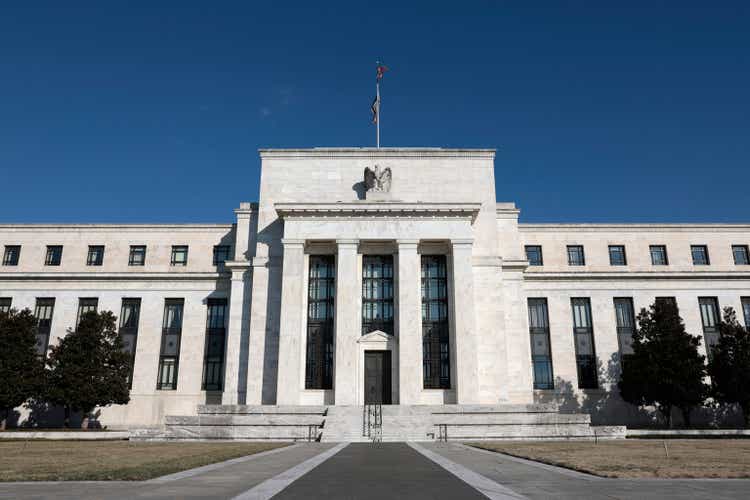Anna Moneymaker
In this politically-charged environment, the actual economics behind the economic headlines often get lost. However, what has remained at the top of everyone’s mind is the current rate of inflation and how we can avoid what seems to be an inevitable recession. In its effort to curb inflation, the Federal Reserve has raised its funds rate 5 times since March, with 75 basis point increases in their past 3 meetings. Although the inflation rate has remained high, markets have expected the Fed to implement a smaller 50 basis point hike and ultimately hold rates steady at 5% in 2023.
As of right now, the economy is currently in a state of flux between two extremes. On the positive side, the unemployment rate of 3.7% is just above 50-year lows. On the negative side, the inflation rate of 7.7% remains stubbornly high, indicating that the Phillips Curve is alive and well. Additionally, while the labor market continues to create more than 200,000 net jobs per month, GDP growth has dipped in the negatives over the past two quarters and leading economic indicators, such as the housing market, are signaling the possibility of an economic recession around the corner. The bottom line is that there is too much demand and too little supply.
The COVID-19 relief fund passed by Congress in 2021 is not the cause of this unabated inflation. Economist Milton Friedman’s famous quote that “inflation is always and everywhere a monetary phenomenon” is clear and resounding as it points to the Federal Reserve as the main culprit. While politicians like Senator Ted Cruz like to make this “about fiscal policy and federal spending”, it actually refers to monetary policy and the Federal Reserve.
The Fed policies that included driving the already low Federal Funds Rate to zero and expanding their balance sheet to $8.5 trillion dwarfed their unprecedented response during the great financial crisis. While their actions in 2020 are to be credited for helping avert an even deeper economic crisis during the onslaught of the pandemic, they were too slow in normalizing interest rates after the fact.
That policy mistake, combined with a public eager to resume a normal life in the aftermath of the pandemic, unleashed an unparalleled amount of pent-up spending by businesses and consumers. The demand side of inflation ultimately came from private sector spending with the Federal Reserve as their accomplice. At the same time, supply chain disruptions from COVID-19, rising energy and oil prices, and global instability from the Russia-Ukraine War created a perfect storm of supply shocks.
So with that all being said, where do we go from here? In spite of their policy mistake, the good news is that it is still possible for the Federal Reserve to engineer a soft landing. The more than half a percent decline in the CPI in October, the significant decline in the housing market, and the slight downtick in the inflation rate are all signs that the inflation rate has peaked. In addition to all of these indications, inflation expectations are also declining.
Some believe that because monetary policy works with lags, the Fed is making another policy mistake by being too aggressive. However, we cannot ignore the history of hyperinflations around the world or the US stagflation of the 1970s. It would be far worse if the Fed ended their tightening policies too early and lost control of the inflation spiral. If the Fed pivots before evidence of lower inflation is realized, it will, again, damage their credibility while making all of the rate hikes up until now be in vain.
Consensus among FOMC members to prioritize inflation and front load the interest rate hikes has restored the Fed’s credibility in their commitment to price stability. Continuing their path of rate hikes until there are consistent signs of lower inflation will mean that the Fed can cease their aggressive policies sooner than later.
All eyes will be on the important inflation report that comes just before the FOMC’s December meeting. Some Fed officials have indicated that they are willing to slow the pace of interest rate hikes if there are continued signs of lower inflation. Fed Chair Powell, while maintaining his hawkish stance, said as much during his speech to the Brookings Institution last week. If so, leveling off to a 50 basis point hike will certainly be in the cards. But a 75 basis points shock, while unlikely, may still happen if the CPI report comes in too high. Ironically, the heightened inclination of consumers to spend in the aftermath of the pandemic may keep the economy afloat as inflation declines and helps the Fed engineer that soft landing.
An unfortunate side effect of the Fed’s anti-inflationary cure is a slowing economy. Although a recession may be unavoidable, a mild economic downturn with an unemployment rate below 5% would be an acceptable compromise. In fact, most economic expansions over the past 50 years have happened with an unemployment rate above 5%. Lowering inflation expectations and relaxation of supply chain disruptions may shift the Phillips Curve just enough to decrease the inflation rate without a large increase in the unemployment rate.
Despite the Fed’s policy mistake, the current political climate surrounding the Russia-Ukraine War and subsequent surging energy and oil prices, and supply chain disruptions, the Fed still has a chance to curb inflation before the next year ends, optimistically pointing to a way out of a likely economic slowdown.


Be the first to comment